
Caregiver peace of mind is about ensuring that the person with Alzheimer’s is safe, happy, and well at all times. As discussed in our opening article, What is Assistive Technology for Alzheimer’s?, it is the first of four categories on technology relating to the Alzheimer’s care partnership.
Since caregivers can’t have a watchful eye 24/7 and in-home services are not always possible, technology must play a role in filling the gap.
There are six categories for “peace of mind” technology:
1) Surveillance cameras
2) Localized sensors
3) Location sensors
4) Personal emergency response systems (PERS)
5) Medication adherence
6) Remote biometric monitoring
Surveillance Cameras
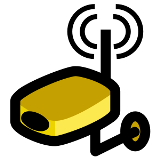 There are two usage scenarios:
There are two usage scenarios:
1) The caregiver is at home with the loved one: in this scenario, the caregiver is in another room of the house but can see the patient on a monitor. Baby monitors are an example. Most use RF but newer ones utilize the WiFi system.
2) The caregiver is away from the home: in this scenario, the caregiver can view the patient remotely via today’s mobile devices. These are sometimes referred to as “nanny cams” which tends to imply one camera watching one area. However, as prices continue to drop, having a suite of security cameras is becoming more realistic.
Though camera systems might be considered invasive and setup can get complicated, they are becoming more affordable and easier to use. Used appropriately, this gives the caregiver the freedom to be away from their loved one or even monitor hired-help.
Localized Sensors
Sensors of this type fall into 1 of 3 categories:
1) Proximity – detection of objects within a localized range; generally under 1,000 feet. A transmitter is placed on a person or object that the caregiver doesn’t want to lose. This transmitter emits a beacon that can be detected by a receiver.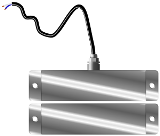
2) Status – determine if something is open/closed or on/off. Security sensors, for instance, can detect the opening of a door or window. Other sensors detect light or the absence of light, and respond accordingly.
3) Detection – these sensors detect things such as gas, smoke, or carbon monoxide.
These localized sensors are great for providing alarms in the event of a trigger. They tend to be easy to install and are generally inexpensive. Installation and use of sophisticated systems can become complicated. Also, some devices, such as proximity sensors, can be hard to find on the consumer market.
Location sensors
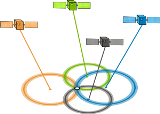 Although newer protocols are coming, this technology is primarily comprised of Global Position Systems (GPS) which allow us to locate something practically anywhere in the world. Some are fixed into vehicles. Others are found in cell phones and other hand held devices. Some are now even being put into shoes, jewelry, and other wearable devices. Batteries must remain charged to ensure proper performance, and performance can also be hindered by obstacles that block the line of site with the satellites. For instance, if the subject is in a building, they may not be seen. It seems feasible, and we’ll explore this later, that a person’s path could be tracked up to the point of entering a building. Location services generally require a monthly service plan but the associated hardware is becoming more affordable.
Although newer protocols are coming, this technology is primarily comprised of Global Position Systems (GPS) which allow us to locate something practically anywhere in the world. Some are fixed into vehicles. Others are found in cell phones and other hand held devices. Some are now even being put into shoes, jewelry, and other wearable devices. Batteries must remain charged to ensure proper performance, and performance can also be hindered by obstacles that block the line of site with the satellites. For instance, if the subject is in a building, they may not be seen. It seems feasible, and we’ll explore this later, that a person’s path could be tracked up to the point of entering a building. Location services generally require a monthly service plan but the associated hardware is becoming more affordable.
Personal Emergency Response Systems (PERS)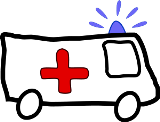
These systems help notify others if a person has an emergency such as a fall. Generally the user wears a transmitter which communicates through a phone line to a response center. Some require the user to push a button and newer ones can actually detect a sudden change in elevation in the case of a fall. While these devices can provide increased independence for an older adult, they are not particularly suited for someone with dementia due to the need to wear the device at all times and interact with it when needed. They also require a service plan and must be within a limited range of the home phone where the receiver is located.
Medication Adherence
This technology is comprised of reminders and tracking systems to ensure that medications are properly administered. These range from simple reminder apps on smart phones to more sophisticated dispen ser systems. Newer technologies can also detect how much medication remains in a bottle. While these solutions are not suited for most people with dementia, they do ease the burden on the caregiver. Reminder systems are generally inexpensive while the dispenser systems can get pricey. And of course, no system can ensure that the patient actually takes the medication.
ser systems. Newer technologies can also detect how much medication remains in a bottle. While these solutions are not suited for most people with dementia, they do ease the burden on the caregiver. Reminder systems are generally inexpensive while the dispenser systems can get pricey. And of course, no system can ensure that the patient actually takes the medication.
Remote Biometric Monitoring

These devices allow a person’s vitals and other important data to be monitored at home. This information can include: blood pressure, temperature, weight, respiratory rate, and oxygen consumption. Devices can be hidden (weight scale embedded in a mat), hand-held, or even worn throughout the day. Real-time data can be sent directly to a medical professional without any action by the user. This reduces the number of doctor visits and also helps identify potential problems sooner. While this is the fastest growing category discussed, the technologies are still relatively new and are not necessarily dementia friendly.
All of the categories discussed come together to improve home safety and patient well-being. This added assistance provides the caregiver with an improved peace of mind.
For part one of this article, please visit us at: What is Assistive Technology for Alzheimer’s?
If you like what you’ve read, why not receive periodic updates by subscribing to the TinT Newsletter?
Do you think technology can help caregivers achieve peace of mind? We would love to hear your feedback! Please feel free to share.

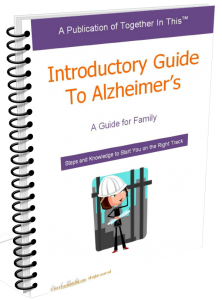




I am actually testing a Proximity device right now for a non-profit, to see how easy it is to use for seniors and caregivers who are not ‘technologically inclined” – for my site Assisted Living Directory.
Thanks for connecting with us on G+ – you have a great site, and valuable information!
That’s great. I’m excited to hear that someone else is testing technology to help others. I will be very interested in what you learn. Eventually, this series will focus on each piece of technology to help people understand their options.
I just wanted to add the link to David’s review of this incredible device to help prevent/manage wandering. It’s a great review that I recommend you check out after you leave your own comment here, of course : )
Click here to view video: YouTube Video
This is a good list — glad you’re in the space and hope that you will start looking at individual named offerings to help readers select.
Best,
Laurie Orlov
ageinplacetech.com
Thanks Laurie for the positive feedback. I do plan to start evaluating the unique products to help readers. BTW, I have been enjoying your newsletter for a couple of years now. Thanks for helping me learn.
First visit on this page (from your comment on today’s ARR blog.)
Do you know if there exists – or is being studied – some sort of beeper to localise hearing aids. My Mom (with severe Alzheimers) has lost 7 – most probably still in the house somewhere – in the last year and a half. I believe she carefully wraps them in a tissue.
Hi Charlotte and welcome to our site,
I do not know of any solutions to your specific need. I did a search but had no luck as well. There are new devices that help us locate lost items, and I’ve included a link below. When the article from the link below was published about 1 1/2 years ago, the devices were about the size of a quarter. They may be smaller now. I’m not sure if the blue tooth frequency would interfere with a hearing aid. If they get small enough to make it feasible (I’m don’t know what type or size aid you have), it might be worth trying. I also have not tried any of these products but it might be worth contacting them.
Stink N Find
mike
HI Mike, This is my first visit to your site as well. It is very well-done and professional. Thanks for all the help you are offering here for your target audience. I can see that many folks are being helped. Keep up the good work. Amy
Thanks for the wonderful feedback, Amy.